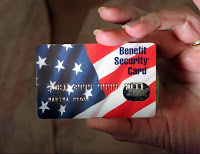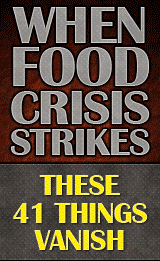 |
| image source |
Eric Blair
Activist Post
It seems whenever the government injects money into a specific industry, prices climb quickly and a bubble of some sort ensues.
We had the real estate bubble which was aided by government guaranteeing the risky loans that banks made to unqualified buyers. Likewise, we’re still in the midst of an unprecedented college bubble which is inflating costs far beyond the official rate of inflation due to the government’s monopoly and loose requirements on student loans. And, predictably, the mandates of the Affordable Care Act (sic) are already driving up healthcare costs even faster than quasi-monopolies were afforded before the law passed.
This government spending has, for all intents and purposes, created a false demand that would not have naturally existed in the marketplace. Could the same thing now be happening to food prices due to an infusion of government money?
As food prices are already skyrocketing from the pressures of record droughts, biofuel mandates, commodity speculation, and good old fashioned currency debasement, there is certainly enough blame to go around. But should government spending on food stamps be added to this list of culprits?
A new report from last week showed food stamps hit another record of 46.7 million recipients in June, an increase of 173,000 from the previous month. That’s nearly 1 in 7 Americans now dependent on government food aid.
At an average monthly cost of $134 per recipient, that’s $6.26 BILLION injected into retail food stores every month. Or roughly $75 billion per year.
Total supermarket sales in 2011 was $584.369 billion. Using this number as a gauge, current food stamp use represents nearly 13% of all retail food sales.
That’s not exactly a government monopoly like they have on student loans or mortgage guarantees, but it’s certainly enough to contribute to price increases. And if we were to add in other welfare programs and farm subsidies, the percentage of food sales with government handouts is likely much higher.
Additionally, since the U.S. government borrows 54 cents of every dollar it spends, every expense adds to the weakening purchasing power of the U.S. Dollar, putting further pressure on the cost of essentials like food and energy.
 It is not a question of whether or not food stamps are the right thing to spend money on, especially during such tough financial times and rapidly rising food prices.
It is not a question of whether or not food stamps are the right thing to spend money on, especially during such tough financial times and rapidly rising food prices.
But it should be noted that food stamp costs now exceed what the Pentagon spends each month on the war in Afghanistan.
Although government spending still represents a relatively small percentage of retail food sales, they appear to be striving for a monopoly in regards to food charity with the criminalizing of feeding the poor and homeless happening all around the nation.
This is how they trap Americans into dependence on their system. By eliminating alternatives to charity, much like they’ve eliminated alternatives to student loans or health care services, they can better dictate the rules to the slaves such as drug testing welfare recipients.
What’s more, by eliminating the competition, they’re able to funnel the proceeds into their crony corporations. By the way, JP Morgan runs and gets a cut of the food stamp program. But I digress.
Clearly, struggling Americans can hardly be blamed for their predicament since they had nothing to do with the offshoring of jobs, the reckless deeds of Wall Street, the unforgivable war costs, or high food prices that are devastating the U.S. economy.
But we would be remiss to not ask if government spending was ultimately doing more harm than good.
Read other articles by Eric Blair HERE


Be the first to comment on "Does Explosion in Food Stamp Spending Contribute to Higher Food Prices?"